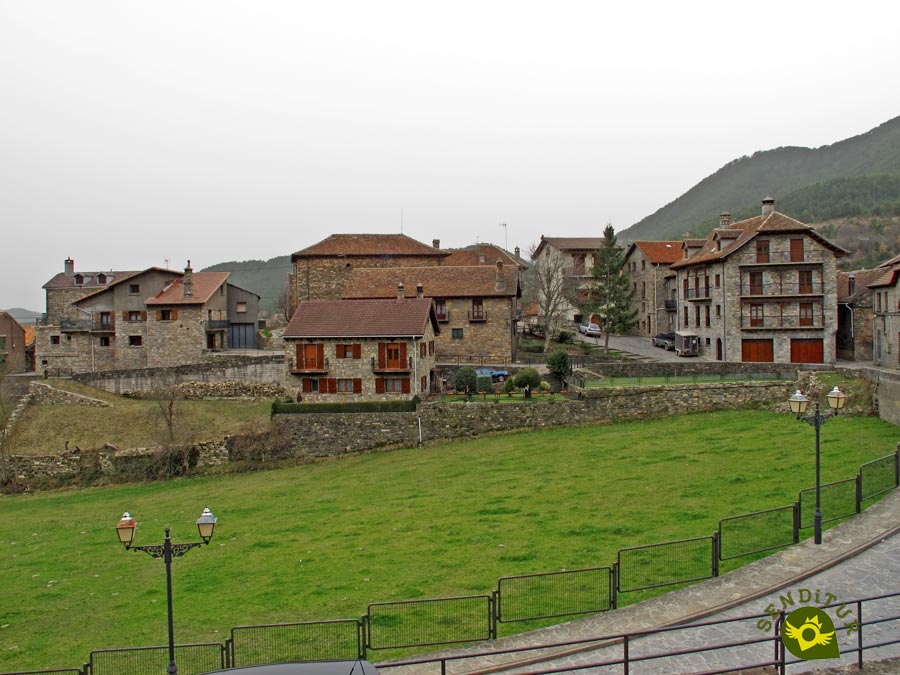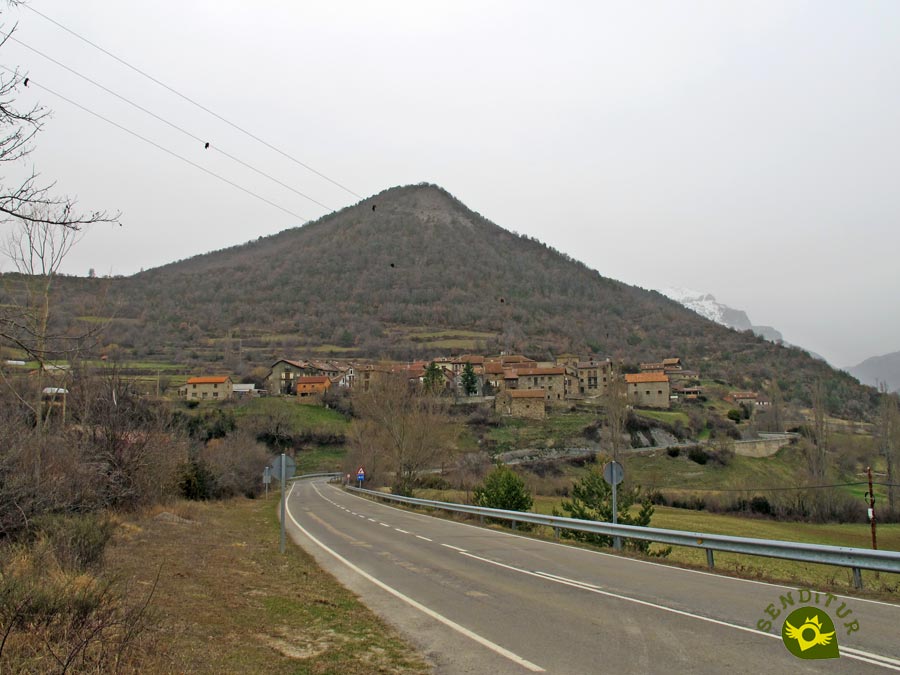O Ciresa is the last inhabited nucleus of the valley, the town, very near already to the head of the Valley of Hecho, is located in the slope of the mount Santidoro, guarded by the monastery of San Pedro, rising on the ravine of Espetal, tributary of the Aragón Subordán river. Already in prehistoric times there were population centres in the area, as can be seen from the number of dolmens scattered around Siresa. The village is also located next to the Roman road Bearn-Cesaraugusta which crossed the Summo Pyrenees through the Palo pass, where there was a Roman settlement. Although this settlement may have lasted for a long time, the history of Siresa is intrinsically linked to that of the monastery of San Pedro and its Carolingian founder, Count Galindo Arnaéz I, in 833. It is assumed that Siresa would grow up around and under the protection of the monastery between the 9th and 11th centuries, when it had its most important years protected by the Counts and Kings of Aragon, becoming a royal chapel in the 11th century, when Countess Doña Sancha, sister of King Sancho Ramírez, ruled Siresa. The town maintained its royal estate until the 19th century. In the middle of that century it was a first-class customs office dependent on Canfranc and was a municipality in its own right until the end of the 19th century, when it was incorporated into Hecho. In 1971 the towns of Embún, Hecho and Urdués formed the Valley of Hecho.

Siresa maintains a marked mountain character in its urban setting, where some of its houses, such as Organero, Agustine or Pizuela, conserve the typical construction characteristics of the Valle de Hecho, although only the House of Berdolé has the old chimney, a truncated cone "chaminera". The town is configured along a street that surrounds the ravine. At one end is the upper quarter, around the Square of the Virgin, and at the other, where the French bridle path once entered, the suburb, next to the monastery, perhaps the oldest in Aragon, which was also a hospital for pilgrims and a school for Aragonese kings.

Of the monastic complex of San Pedro only the church survives, today a parish church, a silent witness of a glorious past, as its height and dimensions show. There are assumptions that say that the church is from the 9th century, based on the similarity of its unique western portico with a tribune with the western body or antechurch of the Carolingian churches. The present appearance of the temple is the result of the numerous restorations and reforms suffered throughout the 13th, 15th-16th, 17th and 18th centuries and the new works of the 20th century, but it is originally Romanesque, from the 11th and 12th centuries. It has been a National Monument since 1931 and houses a beautiful Crucified Christ and a carving of the Virgin of Siresa, both from the 13th century, as well as the baptismal font where it is said that Alfonso el Batallador received the sacrament. Siresa also conserves the schools and the community bread oven, now converted into a museum where the process of making bread when it was kneaded at home is shown.

Siresa celebrates its major festivities in honour of San Blas on February 3rd and the minor ones are on June 29th celebrating San Pedro.
Tradition has it that one of the most notable monarchs of the kingdom was born in Siresa, Alfonso el Batallador, who received this pseudonym from the many warlike conflicts that he settled in his favour. And that he was baptized in the monastery of San Pedro, called Luz de Occidente because of its extensive library that was guarded by more than a hundred monks in the Middle Ages, where he also received his studies.
From Siresa, you can see the fields and bordas that give way to the Natural Park of the Western Valleys. Through places such as Reclusa, Santana, Gabardito and Selva de Oza that still preserve the paths that were used by shepherds, loggers, smugglers, exiles, police officers... today it is the hikers who enjoy the beauty of these forests, high mountain pastures and rocky areas. In addition, the GR-15 and the GR-11 bring the main peaks and lakes of the surroundings closer, while crossing the different valleys of the Jacetania.

Legend has it that once upon a time, in the valley, there lived a strange woman who was not usually seen. It was rumored that she lived in a cave where she zealously treasured chalices that she obtained with bad arts from as many churches and monasteries as she could find. One fine day a young shepherd found a chalice in the woods which, without his knowledge, had fallen to the strange woman that very night. The shepherd picked it up and returned to his village with his sheep without knowing that the woman was madly looking for the cup and that she had seen from afar how the shepherd picked it up. The incessant bleating and the restlessness of the sheep alerted the shepherd who saw the furious woman struggling to catch him. Luckily, the shepherd's youth allowed him to run like the devil to the church in his village. Faced with the impossibility of catching the young man and recovering his treasure, the woman burst into a rage and shouting a spell turned him into an enormous snake, a form with which he would return to the forest not without first striking one of the stones of the church with rage, leaving the mark of his tail, a mark that can still be seen today on one of the stones at the entrance to the church of San Pedro de Siresa.
The main access road to Valle de Hecho is the N-240, which links it to Pamplona, Jaca and from there to Huesca via the N-330. The starting point to enter the Valle de Hecho is in Puente La Reina de Jaca where we will take the A-176 and following the course of the Aragón Subordán river we will arrive at Embún, Urdués, Hecho and Siresa.
Siresa has a regular bus service linking it to Jaca. The telephone number for further information is 974 360 508
The closest train station to Siresa is Jaca. The telephone number for further information is 974 361 332
SENDITUR is not responsible for any variation in the information described, as well as for the misuse of its guides and recommends that everyone be responsible and prudent in carrying out the activity. Likewise, we invite you to document yourself with books and specialized guides to complement the information described. From the commitment of SENDITUR with Nature and the respect to the balance of the environment, SENDITUR urges you to travel in a responsible way, with low environmental impact and respecting at all times the Natural, Cultural and Social environment wherever you go. For any suggestion, SENDITUR invites you to send an email to .
Continue watching …